HobbyBoss F-5E Tiger II
The Northrop F-5 is a twin-engine, supersonic light fighter introduced in 1962. The F-5A, named the Freedom Fighter, was reliable, maneuverable, relatively cheap to produce and maintain, and was popular with foreign militaries looking for an alternative to the Soviet Mig-21. (The F-5 went head-to-head with the Mig-21 during the Iran-Iraq war and generally out-performed it; Soviet pilots who flew captured F-5s concluded similarly that the F-5 could typically out-maneuver the Fishbed.) The F-5 saw limited use domestically, though its evolution, the T-38 Talon, would become the USAF's premier trainer.
In the early 1970s, the F-5 was upgraded with more powerful engines, increased fuel capacity, and some structural modifications to become the F-5E Tiger II. Domestically, the F-5E has found its niche as a capable adversarial trainer, flying with various Air Force, Navy, and USMC aggressor squadrons at Nellis AFB, MCAS Yuma, and notably TOPGUN when it was located at Miramar. Indeed, the F-5 achieved pop culture fame as the “Mig-28” in the film “Top Gun”, which, in a sort of Escherian comparison with the actual F-5, we learn that the F-5 “doesn't bleed energy below 300 knots like the MiG-28. However, the MiG-28 does have a problem with its inverted flight tanks. It won't do a negative G push over.” True believers know how this scene ends…
In the adversarial role, the F-5 is notoriously hard to spot owing to its small size and paint scheme; it is reportedly decisively humbling when your F/A-18 gets killed by one. According to Wikipedia: “For the first three weeks of the test [at Nellis AFB in 1977], the F-14s and F-15s were hopelessly outclassed and demoralized”; after adapting to qualities of the F-5 carrying the new all aspect AIM-9L missile and implementing rule changes to artificially favor long range radar-guided missiles, “the F-14s did slightly better than breaking even with the F-5s in non-1 v 1 engagements; the F-15s got almost 2:1”.
Though out of production since the mid-80's, around 400 of the 2,600 that were originally manufactured are still operational, serving with the Brazilian, Iranian, South Korean, Taiwanese air forces, among others.
The Kit
The 1/72 HobbyBoss F-5E Tiger II is a rebox of the 1999 Trumpeter tooling. The kit provides markings for four versions: two US aggressor squadrons (VFC-13 Saints and VMFT-401 Snipers), Brazil, and Swiss Air Forces. For the trainers, one foregoes the bombs, refueling boom, and some of the antennae, and can instead opt for dummy sidewinders (painted blue) on the wingtips. The decals are gorgeous.
The model is uncomplicated but well-crafted, with fair (slightly heavy engraved) detail and good fit. The only mold issue is with the tail, which doesn't taper to a point where it joins the fuselage, but rather tapers only to an edge with nothing on the fuselage to meet it. This is readily fixable with a but of Tamiya white putty.
The fuselage is clamshell style, which is always nice as it spares you having to deal with a long seam. The intakes were closed off, with the closure lying only maybe 1 cm from the inlet opening:
Fearing this would be easily visible through the inlet, I opened them with a dremel file,
While there is no trunking to give the inlet a realistic shape inside the fuselage, this is unimportant since it's too dark to see very far into the inlet.
As for other areas of detail, the cockpit control panel is actually pretty nice; though decals are provided, they aren't necessary. And, the wheel wells deserve a shout out:
As you can see, I decided to go with the VFC-13 desert scheme. For some reason, desert camo just begs to be worn out and dinged up; however, these are adversarial trainers, and as such don't suffer the wear and tear of continued sorties in a combat environment. In fact, across the many photos I examined, the only thing that shows notable wear is the external fuel tank. And so, I applied a basic pin wash (AK enamel for desert camouflage) to bring out some detail, and that's it. For the drop tank, I simulated some chipping with a darker shade of gray, and created some light streaking with white and brown weathering pencils (typically I use oils for this kind of thing, but the pencils make for quicker and easier work, and I'm trying to gain some experience working with them). Even the bright red side number looks freshly painted in the photos I've examined.
Paints were as prescribed: Mr. Color 39, 43, and 44 for the camo. I used Alclad Aluminum for all metal surfaces except for the rear of the fuselage before the nozzles, which was painted with Alclad Steel. The trouble with Alclad Steel (and other “black-based” Alclad finishes) is that it reacts with enamels and white spirit. Thus, in order to apply any kind of enamel wash I would need to first apply an acrylic varnish, like Aquagloss. This I guess is fine, but I try to avoid messing with the natural finish of Alclad when possible. Instead, I tried out some AK Interactive weathering pencils, which are essentially water colors, and therefore safe to apply directly to the Alclad. I wet the tip of the pencil and traced the panel lines:
Then, you use a brush damp with water to blend and clean it up.
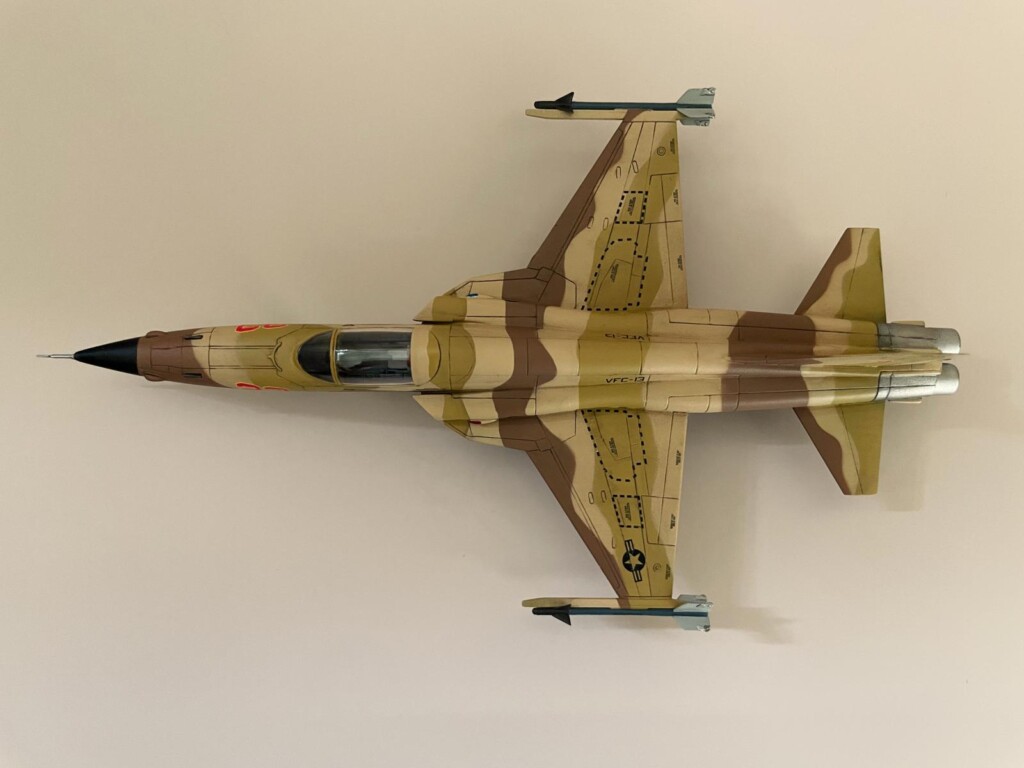
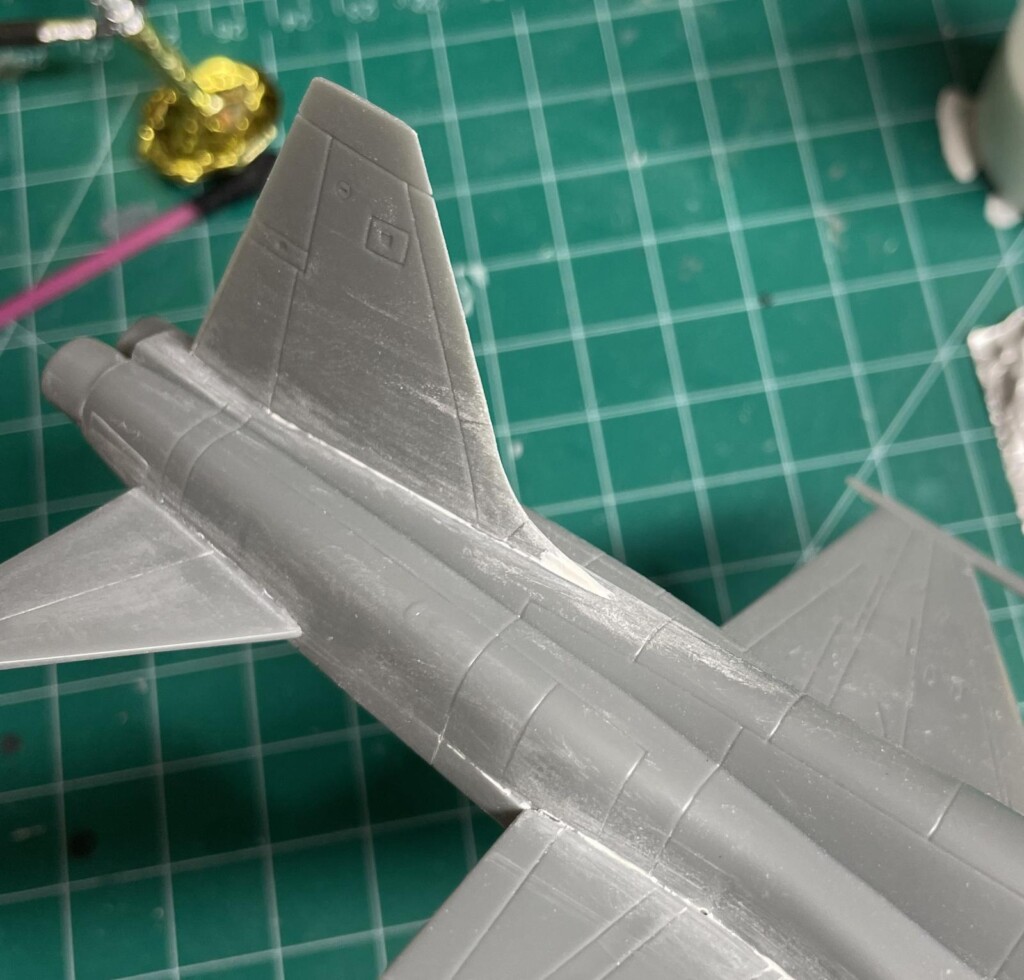
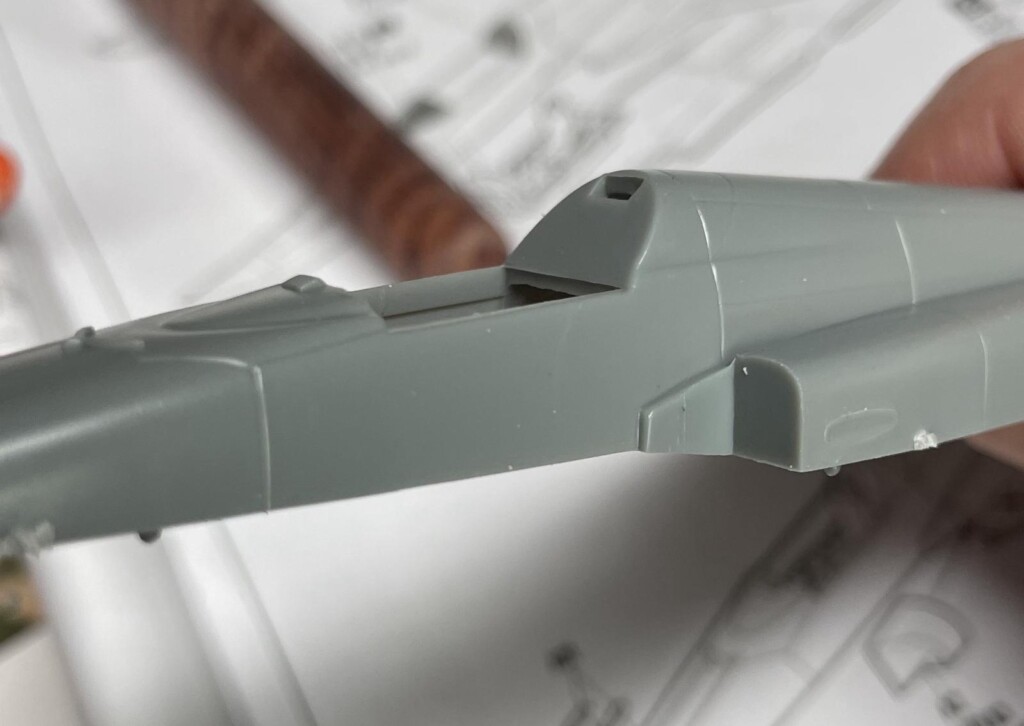

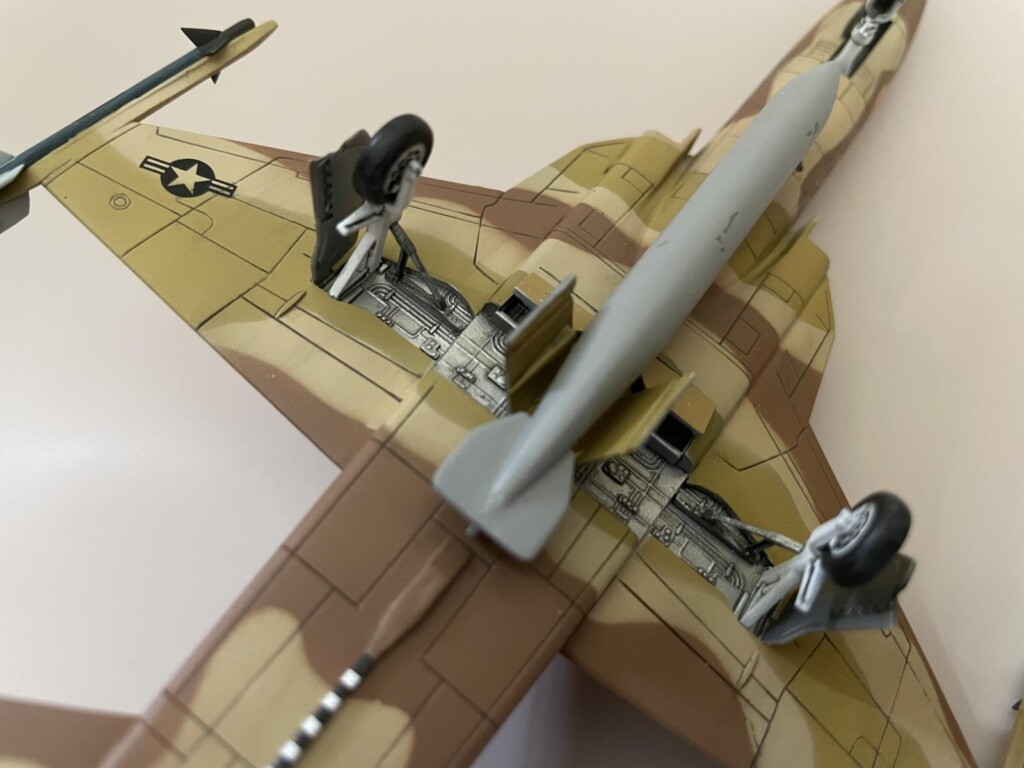
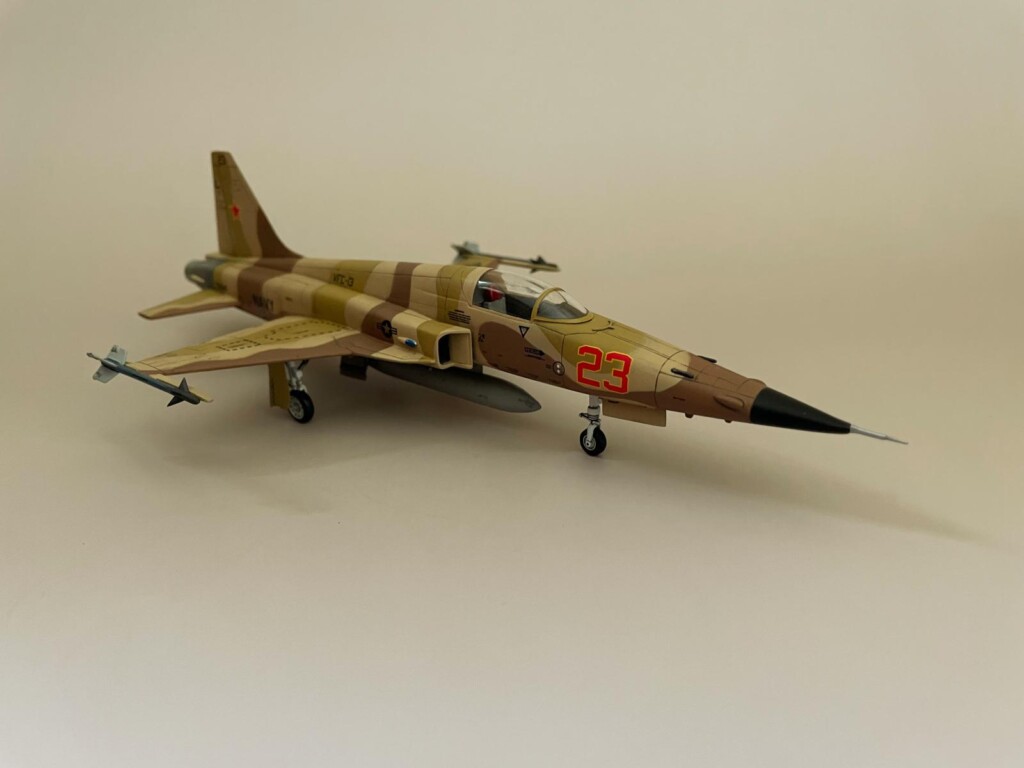
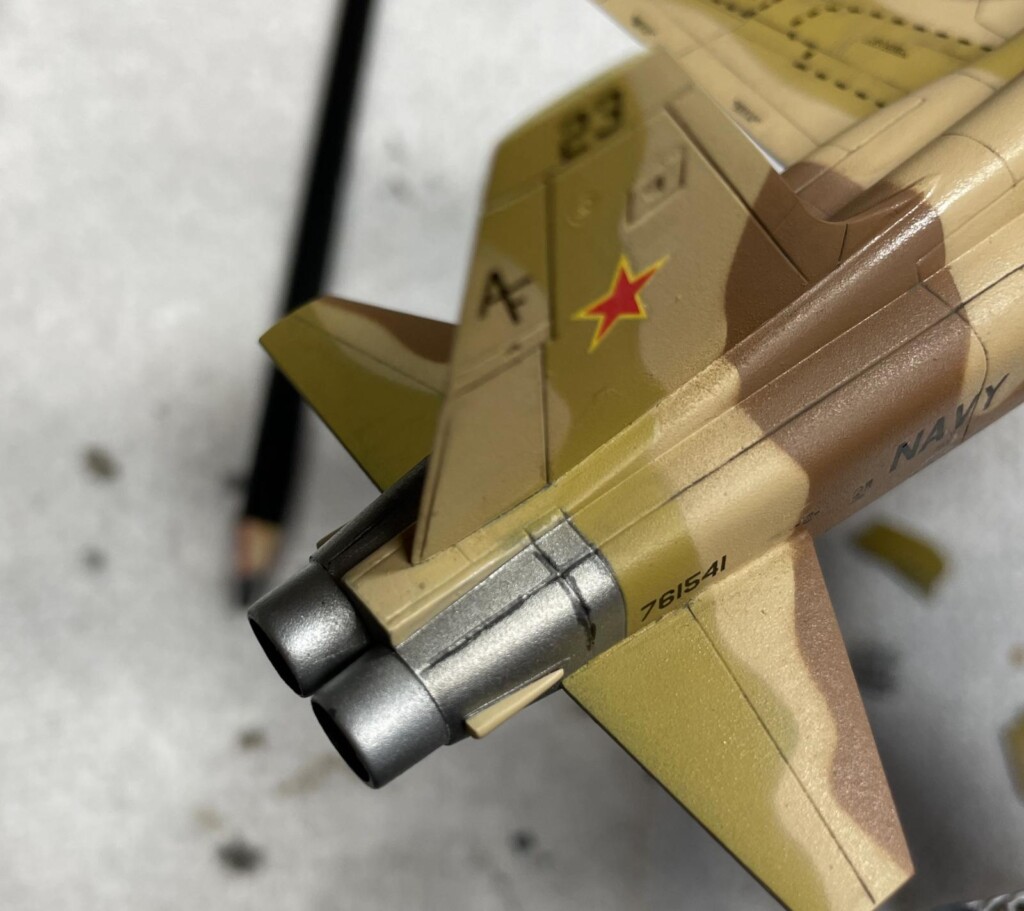
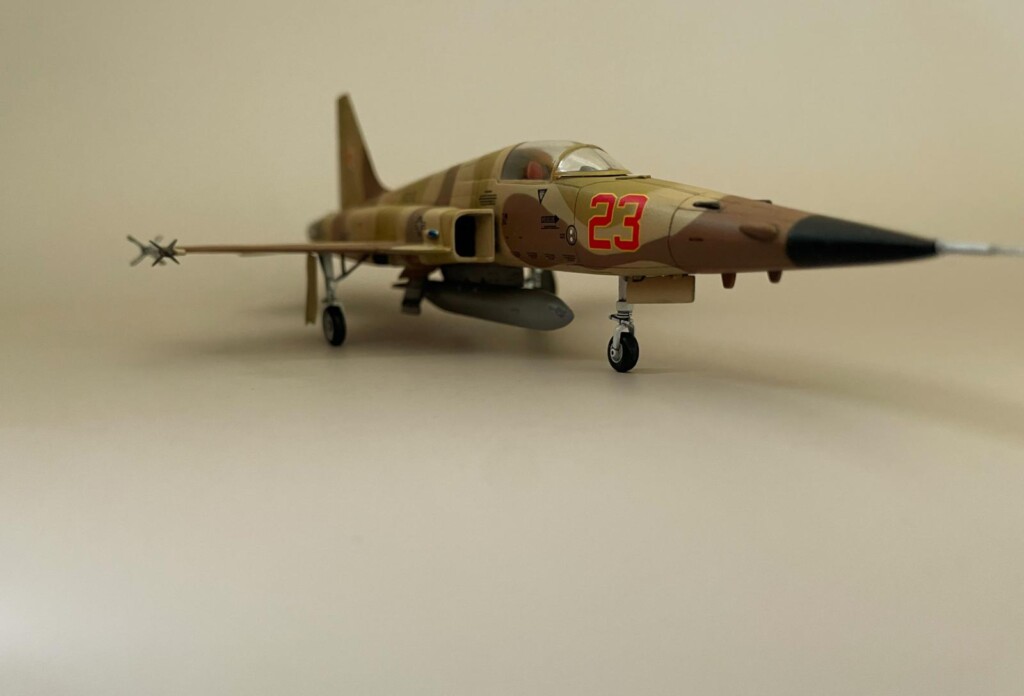
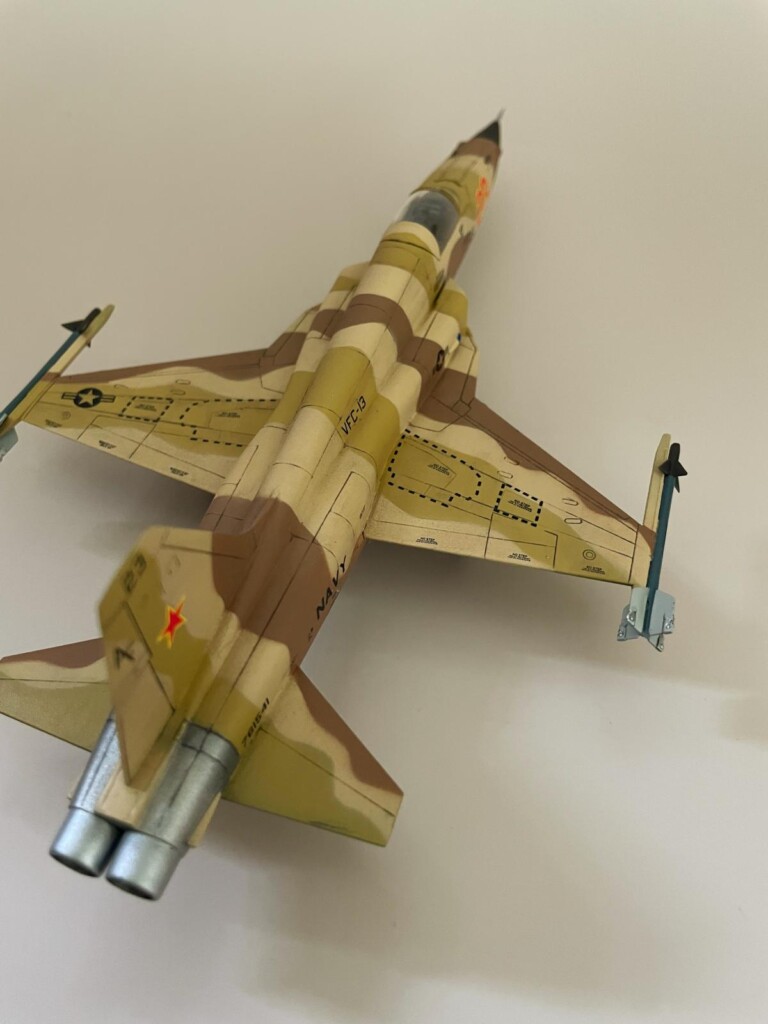
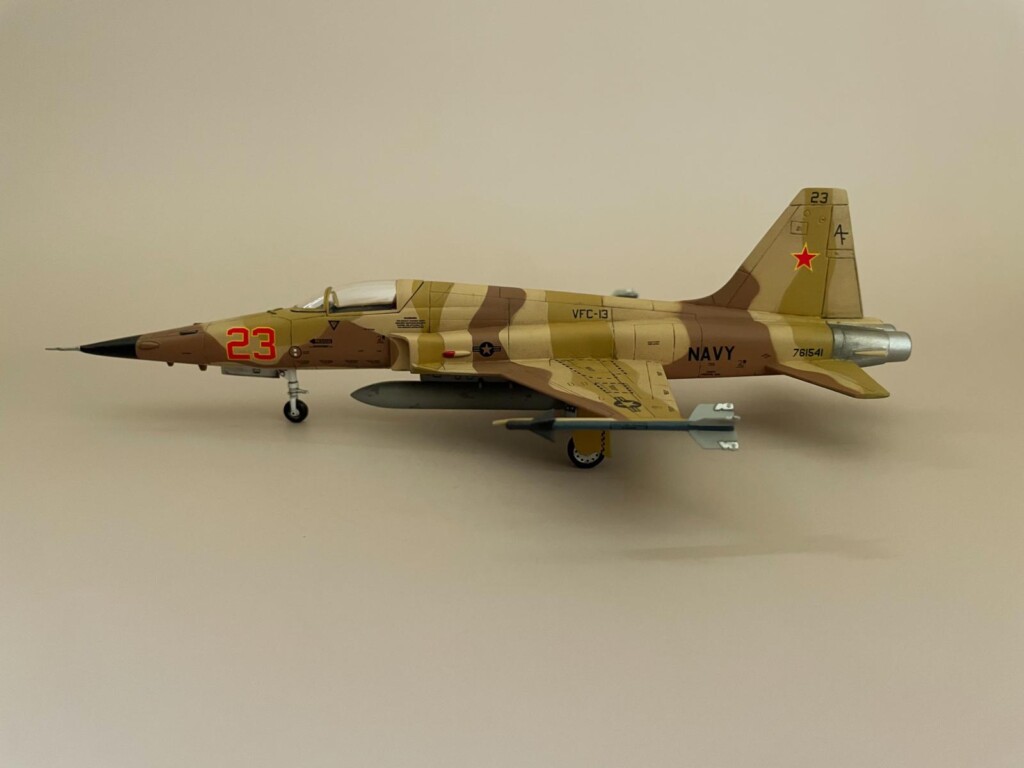
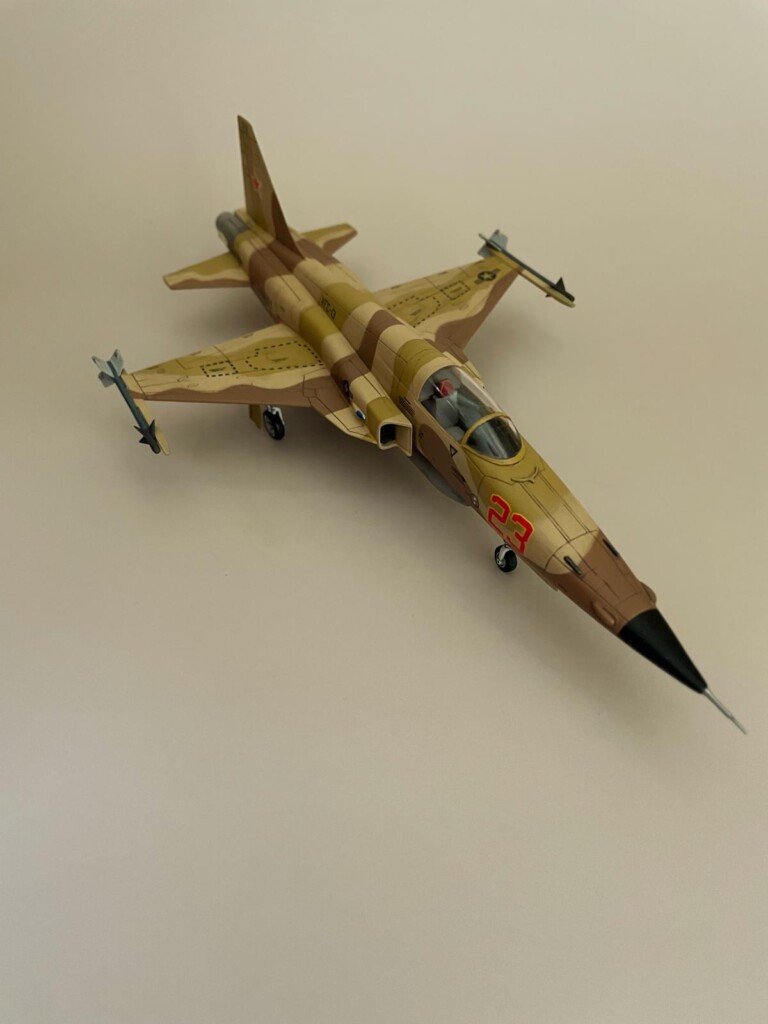
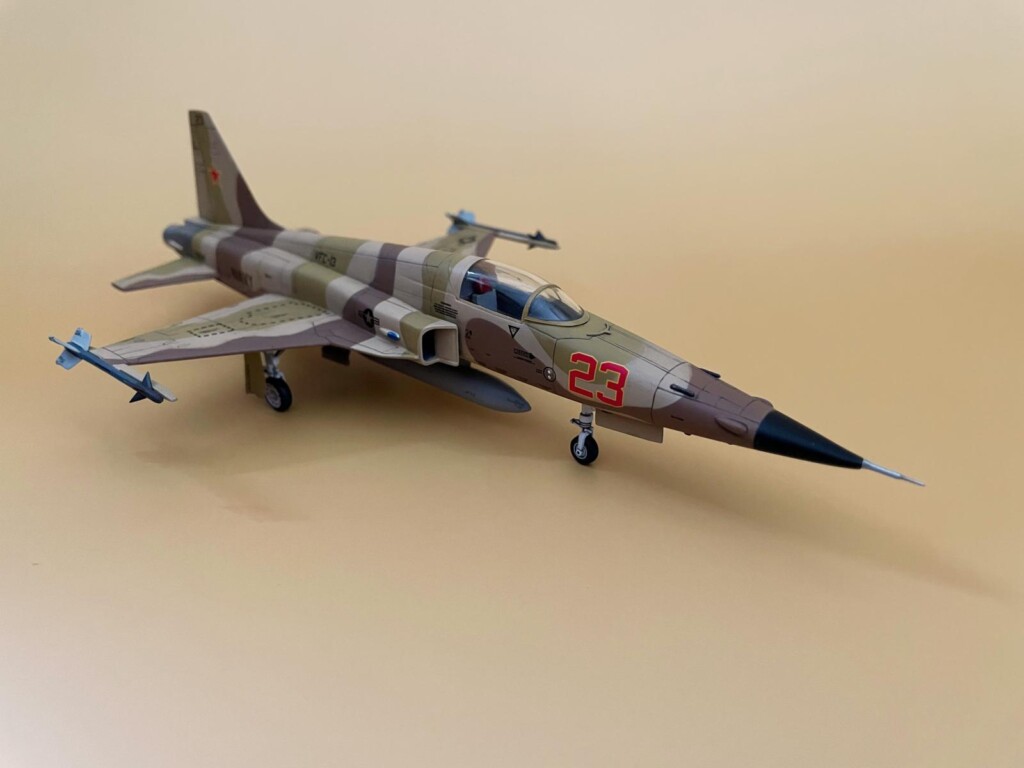
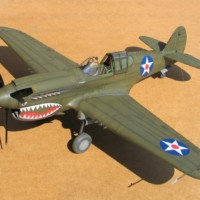
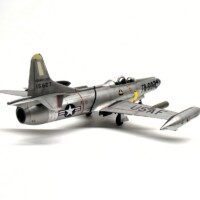
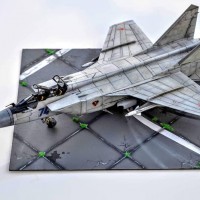
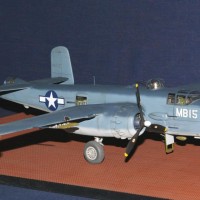
That is a great looking F-5, such a classic aircraft! Besides the photos, I really appreciate the history and hearing other modeler's techniques and products used. Well done, thanks Brian!
The F-5 was also the final design by Edgar Schmued, designer of the P-51, the F-86 and the F-100.
Nice work on this and a really nice paint job.
Very cool, I have been able to see many F-5s when deploying to Fallon for workups prior to deployment, you captured the look wonderfully!
I like how you did the panel lines. A great job, overall.
Excellent result and ditto article, Brian!
Well done!
Really nice result, Brian @bapowellphys
This scheme makes is look quite aggrasive.
I really enjoyed watching this aircraft when it was still active in our airforce.
Excellent build of what really is sexy plane. It looks good from all angles and you really made it standout with that great desert aggressor scheme. Really nice!
Excellent build on one of the best looking aircraft!
Impressive paintwork, Brian.
I agree about the kit, very well done except for the leading tail edge.
Your model has definitely brought out the good looks of the original.
Great build Brian!
Looks great! A big fan of desert schemes, and love the sleek lines of the F-5.